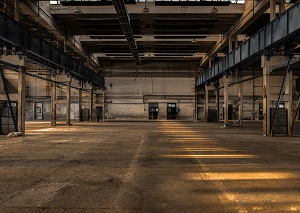Five Trends in Industrial Facilities Management

7 Signs That It’s Time to Buy a New Commercial HVAC System

4 Trends in Industrial HVAC Systems Management
 Once thought of primarily as the maintenance of individual structures and pieces of equipment, facilities management now encompasses the entire function of an industrial building or complex integrating people, infrastructure, processes and technology. Today, tablet computers and Smartphones are as important to facilities management as wrenches and screwdrivers.
Once thought of primarily as the maintenance of individual structures and pieces of equipment, facilities management now encompasses the entire function of an industrial building or complex integrating people, infrastructure, processes and technology. Today, tablet computers and Smartphones are as important to facilities management as wrenches and screwdrivers.
As the scope of facilities management has grown, top industry trends have emerged. Here are some we’ve observed that make this field both challenging and exciting:
1. Continued advancements in technology means increased collaboration between facilities management and IT
Technology is huge. Data enables facilities management professionals to troubleshoot issues before they become major problems. In addition, data helps optimize building performance. Data on heating and cooling, for example, can be used to enhance energy efficiency as well as employee productivity. As facilities and technology are integrated, increased collaboration with IT is required for building operations to run smoothly, while cross training for both departments is critical.
2. Focus on energy efficiency and sustainability grows sharper
The U.S. Energy Information Administration(1) reports that the retail price of electricity to the industrial sector is projected to average 7.14 cents per kilowatt hour in 2016, which is about 1.5 percent higher than the average price this year and 4.2 percent higher than it was back in 2013. The continued price increase along with higher energy consumption and more regulation means the focus on efficiency will be ongoing. The use of technology and data to increase energy efficiency is crucial.
3. Integrating systems is key
To sharpen that focus on energy efficiency, systems are increasingly integrated. A rudimentary example of this is considering the effect the heat given off by lighting has on the performance of heating and cooling equipment. Many companies are turning to commissioning to help facility managers integrate a building’s systems. The American Society of Heating, Refrigerating and Air-Conditioning Engineers defines commissioning as, “the process of ensuring building systems are designed, installed, functionally tested and capable of being operated and maintained to perform in conformity with design intent.” The growth in use of commissioning strategies has created a new category of consultants who specialize in the process.
4. Staffing is a growing challenge
The growing complexity of facilities management coupled with an aging core of facilities management professionals means finding enough people to meet the challenges of 21st century is an ongoing challenge. Some companies are looking to the increasing number of university programs in facilities management to find young talent. Others are choosing to outsource facilities management to companies that specialize in it.
Staffing challenges have also led to a greater need for partnerships. One way to meet growing demands is to leverage the expertise offered by partner businesses, such as utilities, equipment suppliers and installers, and customers. Getting a second opinion from a trusted partner or consultant helps facility managers see the big picture.
5. Health and safety are of utmost importance
Everyone has a right to feel safe on the job. A safe work environment ensures the health and well-being of employees and promotes maximum productivity. Worker safety encompasses everything from environmental safety like indoor air quality to making sure the parking lot is well lighted and having a fire evacuation plan. It’s sad to say, but in this day and age, facility managers need to think not only about ordinary safety issues like slip and fall, but also terrorist threats and extreme weather. The result is that facility managers increasingly must work hard to make safety a reality. It’s a team effort, though, with management leadership and individual workers involved in all safety programs. HR is an especially important partner for facilities management since providing safe and healthy conditions for workers is a vital concern for both departments.
As you can see, the overarching theme of these trends is that facilities management is becoming increasingly multifaceted. It is both a people-driven and data-driven endeavor. The successful functioning of an industrial building or complex in the future means integrating the building and it’s infrastructure with people, processes and technology.
Source(1): http://www.eia.gov/forecasts/steo/report/electricity.cfm




